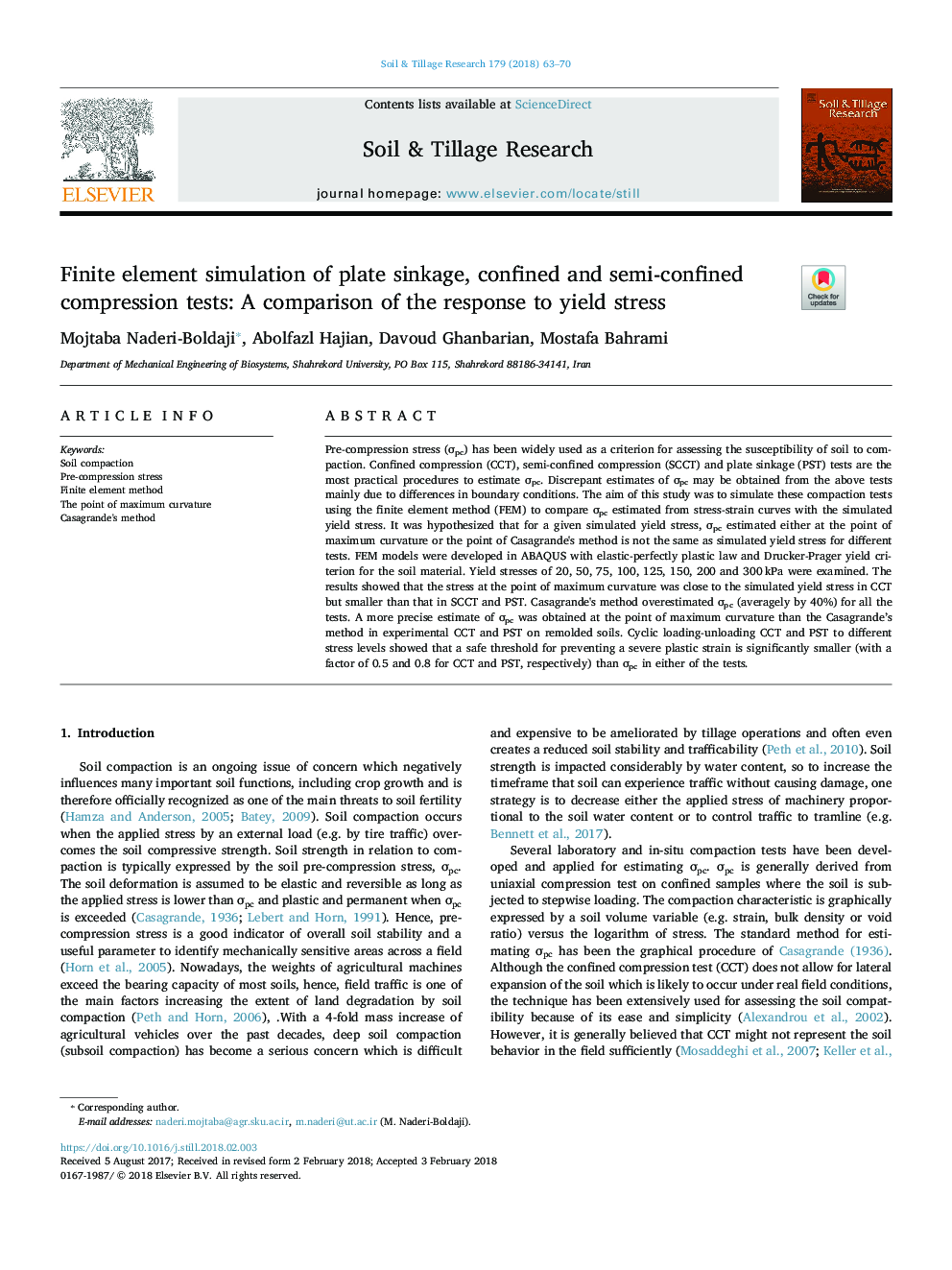| Article ID | Journal | Published Year | Pages | File Type |
|---|---|---|---|---|
| 6773087 | Soil and Tillage Research | 2018 | 8 Pages |
Abstract
Pre-compression stress (Ïpc) has been widely used as a criterion for assessing the susceptibility of soil to compaction. Confined compression (CCT), semi-confined compression (SCCT) and plate sinkage (PST) tests are the most practical procedures to estimate Ïpc. Discrepant estimates of Ïpc may be obtained from the above tests mainly due to differences in boundary conditions. The aim of this study was to simulate these compaction tests using the finite element method (FEM) to compare Ïpc estimated from stress-strain curves with the simulated yield stress. It was hypothesized that for a given simulated yield stress, Ïpc estimated either at the point of maximum curvature or the point of Casagrande's method is not the same as simulated yield stress for different tests. FEM models were developed in ABAQUS with elastic-perfectly plastic law and Drucker-Prager yield criterion for the soil material. Yield stresses of 20, 50, 75, 100, 125, 150, 200 and 300â¯kPa were examined. The results showed that the stress at the point of maximum curvature was close to the simulated yield stress in CCT but smaller than that in SCCT and PST. Casagrande's method overestimated Ïpc (averagely by 40%) for all the tests. A more precise estimate of Ïpc was obtained at the point of maximum curvature than the Casagrande's method in experimental CCT and PST on remolded soils. Cyclic loading-unloading CCT and PST to different stress levels showed that a safe threshold for preventing a severe plastic strain is significantly smaller (with a factor of 0.5 and 0.8 for CCT and PST, respectively) than Ïpc in either of the tests.
Related Topics
Physical Sciences and Engineering
Energy
Renewable Energy, Sustainability and the Environment
Authors
Mojtaba Naderi-Boldaji, Abolfazl Hajian, Davoud Ghanbarian, Mostafa Bahrami,
